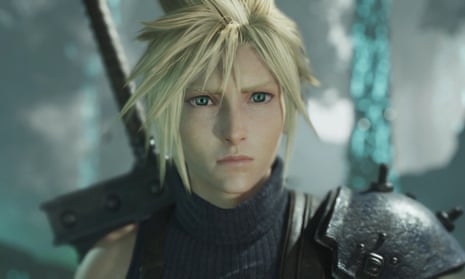In every great role playing game, there is a point where the protagonist has to leave the safety of their home town. After learning the gravity of the threat that they face, gathering their party and stocking up on provisions, they are ready to embark on an epic adventure.
Now in a twist of irony, beloved RPG creator Square Enix is being forced to do the same. The second entry in an ambitious trilogy that began with Remake in 2020, Final Fantasy VII Rebirth leaves Midgar’s beloved dystopian cityscape behind, reimagining the second disc of the 1997 PlayStation classic as its own fully fledged adventure. After eco terrorist Avalanche’s clash with shady megacorporation Shinra, Rebirth sees hero Cloud (he of the oversized sword) and co pursuing cackling villain Sephiroth on a globe-trotting journey.
Square Enix wastes no time in showing off its cinematic chops, launching players headfirst into a game-stealing flashback section that has you reliving Cloud’s storied military past, gloriously depicting Sepiroth’s descent into unhinged villainy. It’s a masterclass in interactive storytelling, hammering home the stakes before you set off. There are few pointy-haired protagonists quite as revered as Cloud Strife, and you can see why his creators initially opted for a tightly authored retelling of a gaming classic. But where Remake placed you in the tattered boots of the legendary merc and then forced you to chase cats in your downtime, Rebirth offers players the occasional seat in the director’s chair.

You weave between glorious story-led vignettes, dungeon-like enclaves and indulgent, distraction-filled environments: the vast open plains of Junon, a tropical paradise, glistening deserts you can steer a buggy across. When you emerge from a series of battles into a new area to explore, it feels like filling your lungs with fresh air. Travel feels genuinely exciting, offering a welcome visual variety to this map-spanning road trip. Rebirth’s more free-form approach offers a welcome antithesis to Remake’s tight corridors, letting players off the leash.
Remake’s Core combat returns, but incorporates the cinematic flourishes of last year’s FFXVI with a welcome, party-focused approach. In Remake’s battles I only ever controlled Cloud, spamming the same few attacks ad nauseam. Yet here you must make full use of your cast of lovable weirdos. There are satisfyingly cinematic partner-synergy moves and different spell-casting “materia” that can be meshed together, and mastering the various nuances of your party members is essential to defeating bosses. Creating a new combat system that satisfies everyone seems like an almost impossible task, but, somehow, Square has pulled it off with aplomb, and swapping between party members mid battle results in a masterly fusion of turn-based RPG depth and modern-feeling action.
From dialogue choices that strengthen your bond with party members and side quests that determine whom you can romance, to a litany of beckoning odd jobs, Rebirth’s take on this mythologised world feels infinitely more lived in. As townsfolk from bustling Kalm wander around about their day, suspicious fishers mutter comments about you under their breath and deer frolic around Junon’s open fields, this is firmly in the “bigger and better” approach to sequel craft. Dancing in parades, racing chocobos, taking photos of scenery and zooming around on Segways … there are a seemingly endless amount of palate-cleansing entries to indulge in. Fiendishly engrossing new card game King’s Blood is a highlight, a distraction deep enough to become a full-blown obsession in its own right.

The problem is, as your journey unfolds, these once frivolous asides become mandatory. Mini games and side quests slowly become obstacles to advancing the plot, and the thread of the Cloud v Sephiroth narrative gets lost in the vastness of the world, turning a high stakes adventure into an uneven and meandering exercise in tonal whiplash. FF7’s second disc originally clocked in at just 10 hours, but Rebirth has stretched that once modest story arc into an intimidating 50-hour epic – and it shows.
after newsletter promotion
With its plentiful side quests, engrossing combat and slick cinematic flourishes, at its best Rebirth is a joyous celebration of video game maximalism. Yet this expansiveness comes at the cost of narrative focus, and cleverly scripted cinematic moments are interrupted by momentum-killing processions of mini-games, puzzles and fan-baiting filler.
Longtime fans will hungrily slurp up every morsel of sugary fan service here, savouring every extra moment spent with this hugely beloved cast. For Avalanche-loving diehards, this is a miracle of nostalgia-stirring dream fulfilment. Newcomers hoping to experience one of the medium’s most beloved stories in its new, modern form, however, should be prepared for some yawn-inducing lows alongside many Buster-sword swinging highs.

Comments (…)
Sign in or create your Guardian account to join the discussion